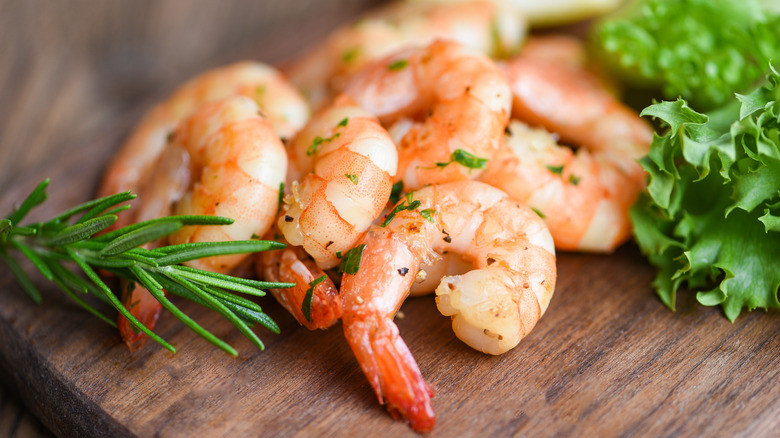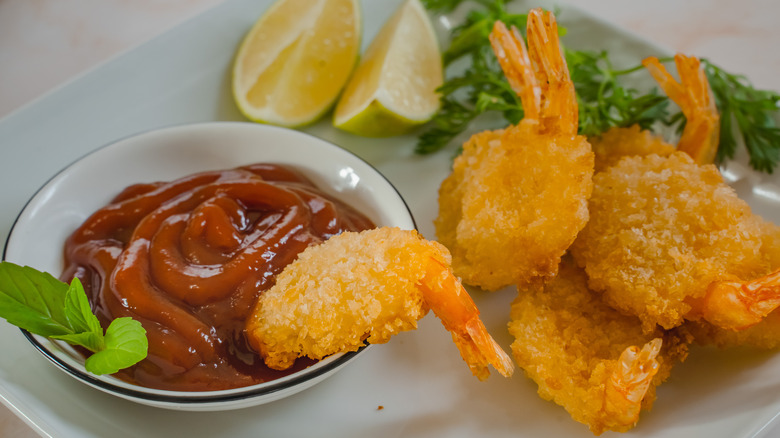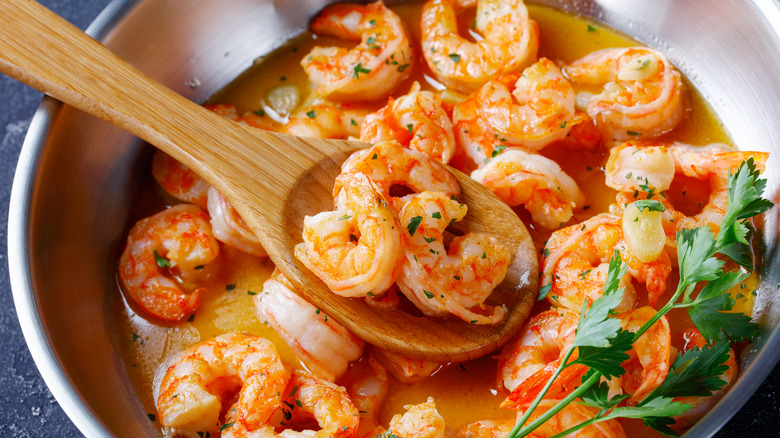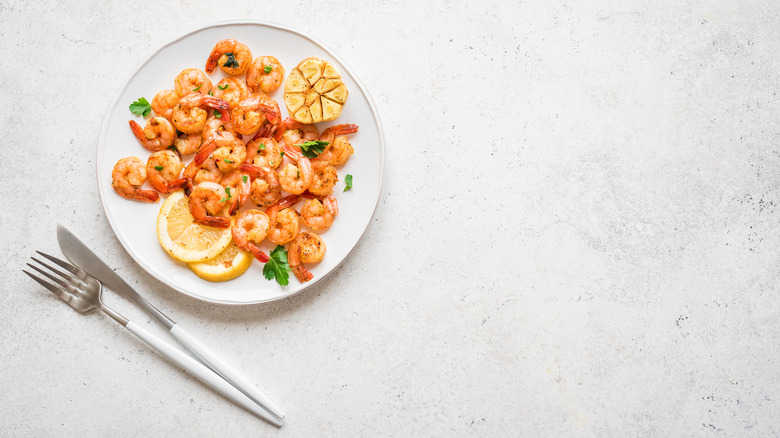Here's How You Should Be Reheating Shrimp
Warm, crispy fried shrimp dipped in sauces galore is delicious, but what happens when you have leftovers? If you're afraid that the crispy batter will turn soggy or that the shrimp will become chewy, you might think it better to toss your leftover shrimp.
According to Southern Living, while reheating shrimp can be challenging, there are tips and tricks you can try so that it tastes delicious the second time around. It is near-impossible to recreate that "fresh out of the fryer" taste, but there are ways you can save and refrigerate those seafood leftovers. Whether you're eating shrimp scampi or grilled shrimp, if you can't finish your meal, you can rest assured that you'll be able to enjoy your meal later with the proper reheating techniques.
There are several methods to correctly warm shrimp for a leftover meal just as tasty as the original, regardless of how it was initially cooked.
Use an oven
According to Recipe Marker, using an oven for reheating helps previously fried shrimp regain a crispy crunch. The slower heating time ensures that the shrimp maintains moisture and don't dry out. Recipe Marker says that the oven method is convenient, safe, and effective. Set your oven to 300 degrees Fahrenheit and line a baking sheet with foil. Lay the shrimp out in a single layer on the foil-lined baking sheet. Place the shrimp in the oven and allow them to heat for ten minutes, checking the shrimp halfway through. When the shrimp are fully warmed, remove them from the oven and enjoy!
Recipe Marker's instructions on reheating in an oven seem simple enough, but if you want to enjoy the shrimp as a different meal after reheating, try adding new sides. According to Allrecipes, whether freshly fried or reheated, shrimp is a popular main dish. Accompany the shrimp with sides such as french fries or macaroni and cheese, and your meal is complete. They also work well in shrimp po'boy sandwiches and as a salad topper.
Sauté
Shrimp scampi reheats splendidly in a sauté pan. The method is an excellent way of reheating any shrimp mixed with other ingredients, according to Kitchen Skip. Warm a sauté pan with olive oil over medium heat. Add the shrimp and other mixed elements such as vegetables or noodles when the oil becomes warm. Stir, sauteéing until the shrimp and additional components are thoroughly heated. During the last couple of minutes, place the lid on the pan and turn off the heat.
Allow the ingredients to rest under the trapped moisture, steaming the dish as it finishes heating. This method, Kitchen Skip shares, is the better option if you prefer to reheat your shrimp without simmering in water or broth. If you're in a rush and need a much quicker reheating method, there is a way could have your shrimp warmed and ready to chow down in no time.
Microwave
Livestrong suggests the microwave as a quick way to reheat pre-cooked shrimp. As the outlet offers, the key is spreading the shrimp in a single layer on a microwaveable safe dish, avoiding overlapping or stacking. Place a microwave-safe lid or plastic wrap over the plate to trap in heat and steam the shrimp. Microwave on high in one-minute increments until the shrimp are thoroughly heated. Allow them to cool before adding to a salad or pasta, or simply enjoy a la carte.
Overcooking shrimp causes the dish to become rubbery, so check the shrimp frequently to avoid this mishap. According to Taste of Home, overcooked shrimp are gray or matte white instead of the opaque, pinky color they should be. Overcooked shrimp is also tightly curled into an O shape, whereas perfectly cooked shrimp are shaped in the letter C. SO be sure to check for any shape changes between heating increments. Enjoy!



